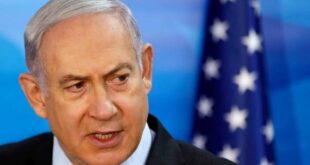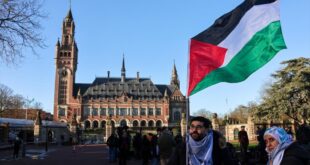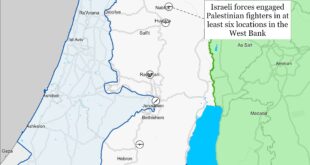Protests have emerged in Syria due to the deteriorating economic conditions in areas controlled by the government. The city of Aleppo has also seen an expansion of these protests on Thursday. Simultaneously, a car was targeted by a Turkish drone strike in the Kurdish-controlled northeastern region of Syria on Wednesday. The strike resulted in the death of the car’s driver and inflicted injuries upon an accompanying journalist.
Assad faces anger in the streets as protests sweep southern Syria
Dozens of protests have taken place in regime-held areas in southern Syria since mid-August. People took to the streets after the government announced that the price for fuel would be increased by 200%. However, the protesters’ demands are not just economic – they are also calling for an end to the rule of President Bashar al-Assad. Our team spoke to a protester in As-Suweida, a city with a large population of people from the Druze religious minority, where the recent protest movement has been especially strong.
Chants like “the people want the regime to fall!”, “Syria belongs to us, not the al-Assad family!” and “Get out, Bashar!” have been ringing through the streets of the Syrian city of As-Suweida in recent days. It’s an echo: protesters from the city – many of the Druze minority – are using the same chants that demonstrators took up twelve years ago when the revolution first began in Syria.
A wave of protests has swept cities in southern Syria since the government’s announcement on August 15 that they intended to increase the price of petrol by 200%, a devastating price increase for a population whose financial situation has been ravaged by twelve years of war. More than 90% of the population lives under the poverty line. Government employees earn, on average, a monthly salary of just 12 euros.
The first group to respond to the government’s announcement were truck drivers in As-Suweida. They called for a general strike and mobilisation.
Our Observer Shadi Al Dubaisi is a citizen journalist who lives in As-Suweida. He participated in the protests.
Protests took place in dozens of places across the governorate. The roads were blocked. The local headquarters of the Baath party [Editor’s note: Bashar al-Assad’s party] and its branches were shut down.
The protesters have popular support as well as the support of the sheikh of the Druze, Hikmat al-Hijri. He supports the calls of the protesters and warns against any harm coming to them. It seems as if the security forces are unable to shut down these protests because of the large popular support as well as the participation of people from all sectors of society, including young people, women and the clergy.
The strike largely took place in As-Suweida. Images shared on August 20 by the local media As-Suweida 24 show dozens of shops in the town centre shut down. Protesters set a large poster of Bashar al-Assad on fire.
Protests also took place in other cities. In Jableh, a town near the coastal city of Latakia, many people participated in the general strike. A video posted on social media on August 20 shows soldiers deployed to the town trying to force people to re-open their stores.
Protests also took place in Deraa as well as in the suburbs of Damascus. In Nawa, a suburb of Deraa, security forces carried out a violent crackdown on a peaceful nighttime protest on August 20.
Syria poverty protests spread to ‘regime-held Aleppo’
Protests in Syria over the worsening economic situation in regime-held areas have reportedly spread to parts of the city of Aleppo, the New Arab reported.
Demonstrations erupted on Wednesday evening in Aleppo’s Al-Firdous, Al-Sukkari, and Salah al-Din neighbourhoods, Syria TV reported, citing local sources.
Regime security forces used armoured vehicles to disperse the protests in Al-Firdous.
Protests have been rocking several parts of Syria since last week, after Assad’s decision to double public sector wages and pensions sent inflation soaring in Latakia, Suweida, and Daraa.
All these areas are under the control of Bashar Al-Assad’s forces with the former seen as a bastion for the regime’s support.
Living conditions in the country, already dire after years of war, sanctions, corruption, and economic mismanagement, deepened by a massive rise in inflation shrinking salaries and worsening living standards.
The protests have coincided with the launch by Syrian activists of the “10th of August Movement”, which calls for peaceful demonstrations and strikes over “the state’s disregard for the future of the people”.
Demonstrations have taken place in restive regime-held parts of southern Syria, including Daraa and Suweida.
In Suweida, protesters raided the local offices of the ruling Baath party on Wednesday night. They also partially blocked a road leading to the Syrian capital of Damascus, opposition activists said.
Protests in regime-held areas – particularly northern areas such as Aleppo – are rare, however.
Syria’s ongoing war began in 2011, after a brutal regime crackdown on peaceful protest and non-violent dissent. More than half a million people have died and millions have been displaced as a result of the war.
Turkish drone hits car in Syria’s Kurdish-held northeast, killing at least one
A Turkish drone strike in Syria’s Kurdish-controlled northeast on Wednesday killed the driver of a car and wounded a journalist traveling with him, according to the local media outlet for which they worked, a medical source and a security source, Al-Arabiya reported.
Turkey’s defense ministry did not immediately respond to a Reuters request for comment on Thursday.
The media office of the Kurdish-led authorities in northeast Syria said late Wednesday that a Turkish drone “targeted a car carrying journalists.” It did not mention casualties.
For the latest headlines, follow our Google News channel online or via the app.
But the local Jin TV station said that the Turkish strike killed the outlet’s hired driver and seriously injured a correspondent. One medical source and one security source in northeast Syria also said the driver was killed.
Turkey is fiercely opposed to the Syrian Kurdish YPG militia and the Kurdish-led autonomous zone in Syria’s northeast, accusing them of links to the Kurdistan Workers’ Party (PKK), designated a terrorist group by Ankara, the United States and the European Union. YPG officials have said it operates separately from the PKK.
As Daesh terror attacks continue, what explains the group’s resilience in Syria?
During the second week of August, the terror group Daesh carried out multiple attacks on Syrian regime soldiers in the governorates of Raqqa and Deir Ezzor, leaving dozens dead and more injured.
With attacks in Syria’s central and eastern regions only continuing to grow in frequency and severity, some may wonder whether the group was truly eliminated when its defeat was announced in 2019.
Saturday, March 23, 2019, was a joyous occasion for the men and women of the Syrian Democratic Forces, the multi-ethnic, US-backed force that led the ground war against Daesh in Syria, as well as the people living in the autonomous regions of northern and eastern Syria.
From Manbij to Kobani, from Raqqa to Hasakah and Qamishli, the streets of cities in Syria’s northeast were packed with people from all walks of life celebrating Daesh’s final defeat at the Battle of Baghouz.
Little did they know that despite the group’s loss of territory, it would go on to maintain bases both inside and outside of the country, which it still uses to carry out operations in Syria.
“(Daesh) uses different frameworks for the continuation of its extremist ideology,” Sardar Mullah Darwish, a Syrian Kurdish journalist and director of Aso News Network, told Arab News.
The group “relies on cells spread in different areas in the governorates of Raqqa, Deir Ezzor, and southern Hasakah, and particularly in the Badia, where they are in areas that are not fully controlled by the coalition, the SDF, or even the armed forces of the regime and other military forces,” he said.
Darwish added that Daesh sustains itself via financial extortion, threatening wealthy residents and those working with international or local NGOs. He added that the use of motorcycles and the black veil known as the niqab are both ways in which the group attempts to camouflage itself among civilians.
Ukraine asks Lebanon to bar Syrian ship carrying ‘stolen’ corn from docking
Ukrainian officials on Thursday asked Lebanon to bar a Syrian state-owned cargo ship carrying allegedly stolen Ukrainian grain from docking in Lebanon’s Tripoli port, according to the Ukrainian embassy and a diplomatic note seen by Reuters.
According to The Jerusalem Post, the Ukrainian mission said in comments to Reuters that the Finikia was transporting 6,000 metric tons of corn, which it considered stolen, from the Black Sea port of Sevastopol.
In the note to Lebanon’s ministries of transport, finance and economy, as well as the customs directorate, the embassy said the corn had been “stolen from storage units in the Zaporizhzhia, Mykolaiv and Kherson regions”.
It said the ship was “in violation of international law” and expressed its hope that Lebanon “does not allow the entry of the aforementioned cargo ship FINIKIA to Lebanese ports to sell stolen Ukrainian grain.”
Lebanon’s ministers of transportation and finance did not immediately respond to Reuters requests for comment. Syria’s government and the Syrian General Authority for Maritime Transport, which owns the Finikia, did not immediately respond to written questions.
No grain no gain
Both the Finikia and the Laodicea are owned by the Syrian General Authority for Maritime Transport. The authority and the ships it owns have been sanctioned since 2015 by the United States for their alleged role in Syria’s war.
Ukraine has estimated that 500,000 metric tons of what it calls plundered Ukrainian grain had arrived in Syria in 2022 since the February 2022 invasion, shipped from several ports.
Syrian Report Says Israel Attacked the Country 25 Times Since Start of 2023
A report issued by the Syrian Observatory of Human Rights (SOHR) Thursday stated that Israel has carried out 25 attacks on Syrian territories since January.
Eighteen of the attacks were aerial and seven were ground-to-ground, hitting 60 targets throughout the country, the report says.
According to Syrian state media, the latest attack Monday evening targeted the Damascus area and sites used by Assad’s army and Iranian affiliated militias. SOHR says two Syrian soldiers were killed in the attack.
Four Syrian soldiers killed in Israeli attack on Damascus, Syria’s state media
The report, which was cited by Haaretz, states that 61 people in total were killed in the attacks. According to the data, 24 were Syrian soldiers, four were Syrian civilians operating for Iranian-affiliated militias, 24 were non-Syrian citizens operating for Iranian-affiliated militias, six were Iranian Revolutionary Guard members, and three were Hezbollah operatives.
The 60 targets hit include weapons warehouses, bases, outposts and vehicles of Assad’s army, Syrian air defense systems, airports – including the Damascus International Airport which was shut down several times – and other sites affiliated with pro-Iranian militias or with Hezbollah.
The geographic distribution of the attacks included eight of the 14 Syrian districts. The report states that 12 of the attacks happened in the vicinity of or near Damascus, six targeted the Quneitra district, three the southeastern city of As-Suweida, three the Aleppo region, three the Homs region, two the coastal city of Tartus, two the country’s southern province of Daraa and one the Hama district. The report added that occasionally, targets in more than one district were hit during one Israeli attack.
Iran Looks For Its Lost Billions In Syria
The release of Iran’s $6 billion frozen funds from South Korea has prompted a website in Tehran to ask: What about over $30 billion owed by the Syrian regime?
Aftab News, a website relatively independent of the Iranian government, argued in an article published Thursday, that the outlook for Syria to pay Iran back looks bleak. Iran has a small share of Syria’s trade, roughly one-tenth of what Turkey exports to the country. Annual Iranian exports are less than $1.5 billion.
Both Iran and its ally, the government of Bashar al-Assad in Syria face serious economic challenges. Iran’s finances have steadily deteriorated since 2018 when the United States imposed sanctions after withdrawing from the JCPOA nuclear accord. Syria has remained in political limbo, insecurity, with various military groups roaming in the country and its other ally Russia weakened by its invasion of Ukraine.
United Nations envoy for Syria sounded the alarm to a worsening economic situation on Wednesday. “Prices are now spiraling out of control for essential goods such as food, medicine, fuel, basic commodities. Every part of Syria, every community, is affected,” said Geir O. Pedersen, adding many are struggling to put food on the table and feed their families.
As it usually happens, a man who is broke remembers what others owe him. So, the story goes for the Islamic Republic that aligned itself with Assad in 2011 as antiregime protests flared in the country. The clerical regime seeing its close ties with Assad as essential for its regional plans, supported Damascus with loans, free oil and tens of thousands of Iranian, Afghan, Lebanese, Iraqi and other fighters.
Now, when Iran suffers from a serious economic crisis some people in Tehran realize that they have spent tens of billions of dollars in Syria – a significant part of their restricted oil revenues – for a dubious outcome.
Estimates range from $30 billion to more than $50 billion material aid provided to the Assad regime. Tehran’s oil revenues in this period averaged from below $20 billion to above $40 billion annually. Therefore, it is safe to estimate that from 2011-2022 oil revenues hardly totaled $400 billion. If Iran spent $50 billion in Syria, that would be more than 10 percent of its total income from oil.
The $50 billion figure was revealed in May when an opposition hactivist group accessed government information. Minutes from a meeting of Iran’s Supreme National Security Council showed that Syria’s debt goes back to a long-term agreement signed between the two countries in January 2019, under former president Hassan Rouhani. However, the debt has been building for much longer, with roughly $11bn worth of oil given to Damascus from 2012 to 2021.
A combination of aid in the form of military support and cash, the total amount of debt to Iran is estimated to be about $50 billion, though the document said the final amount is still being calculated.
 Eurasia Press & News
Eurasia Press & News




